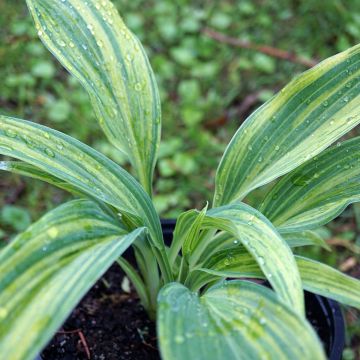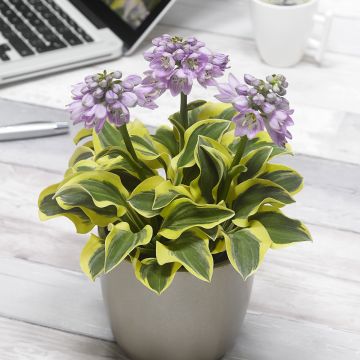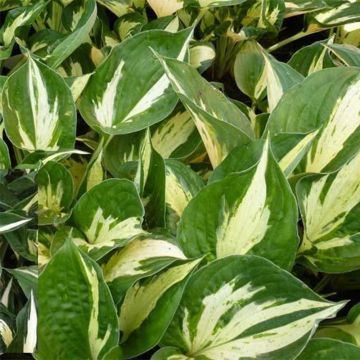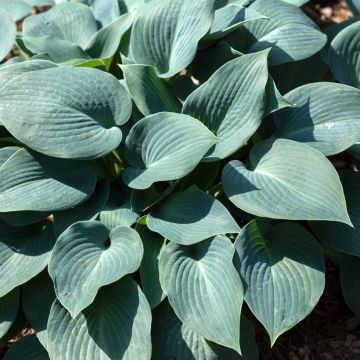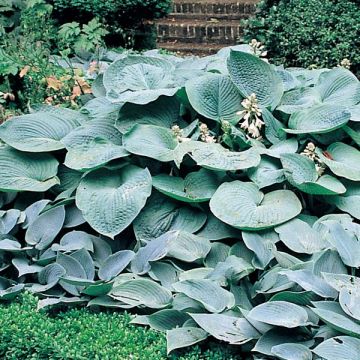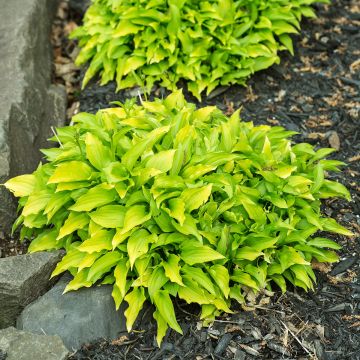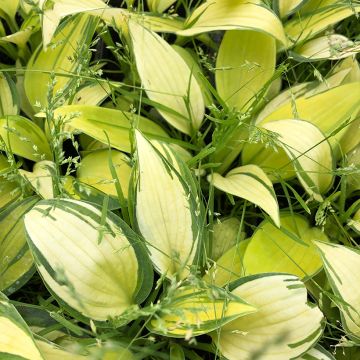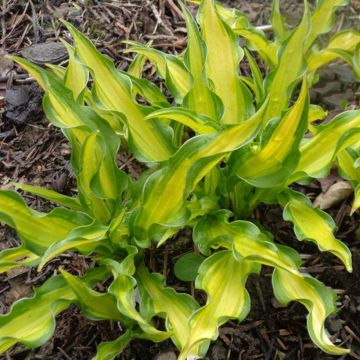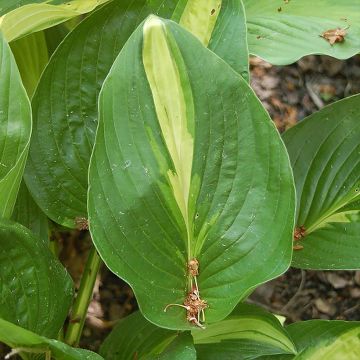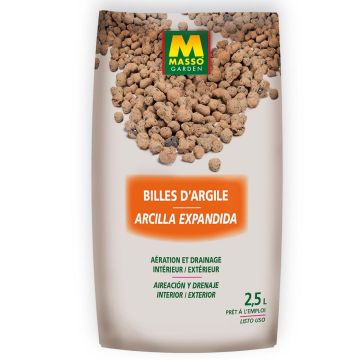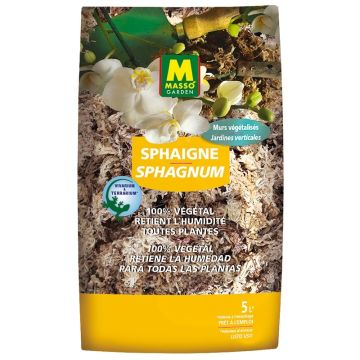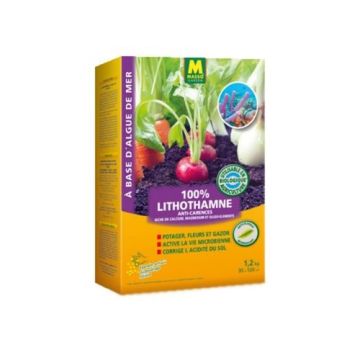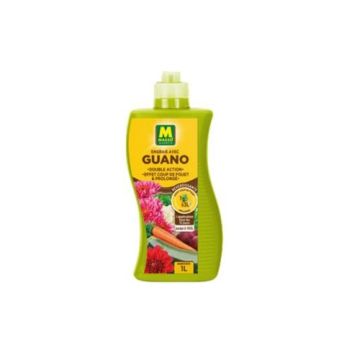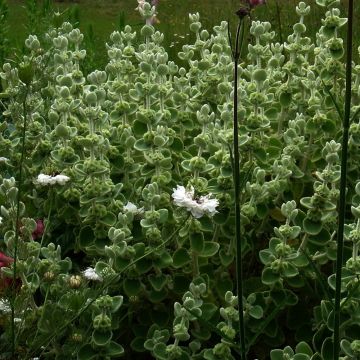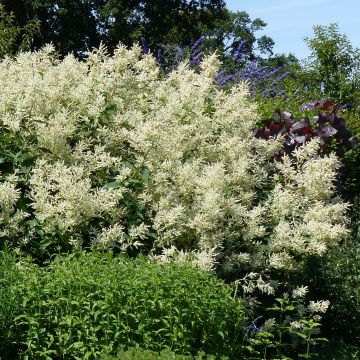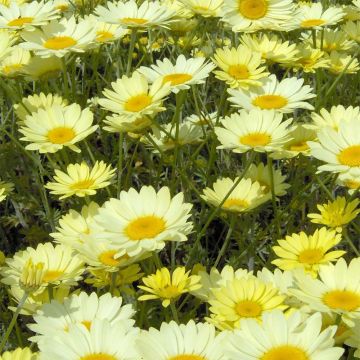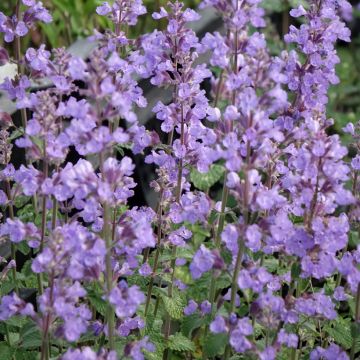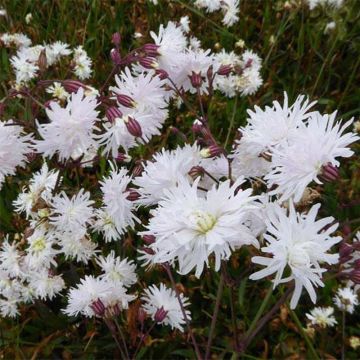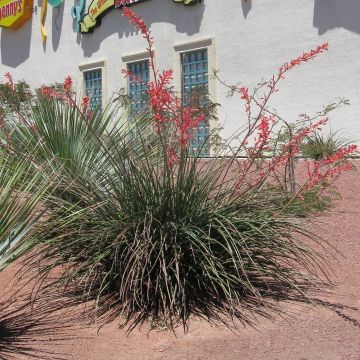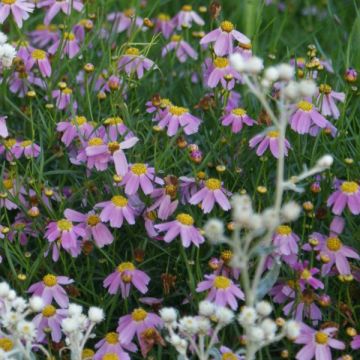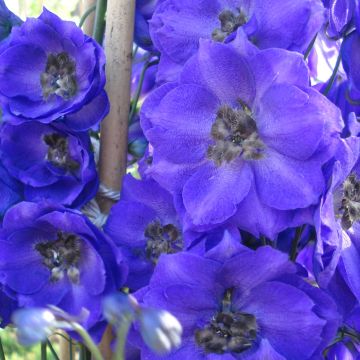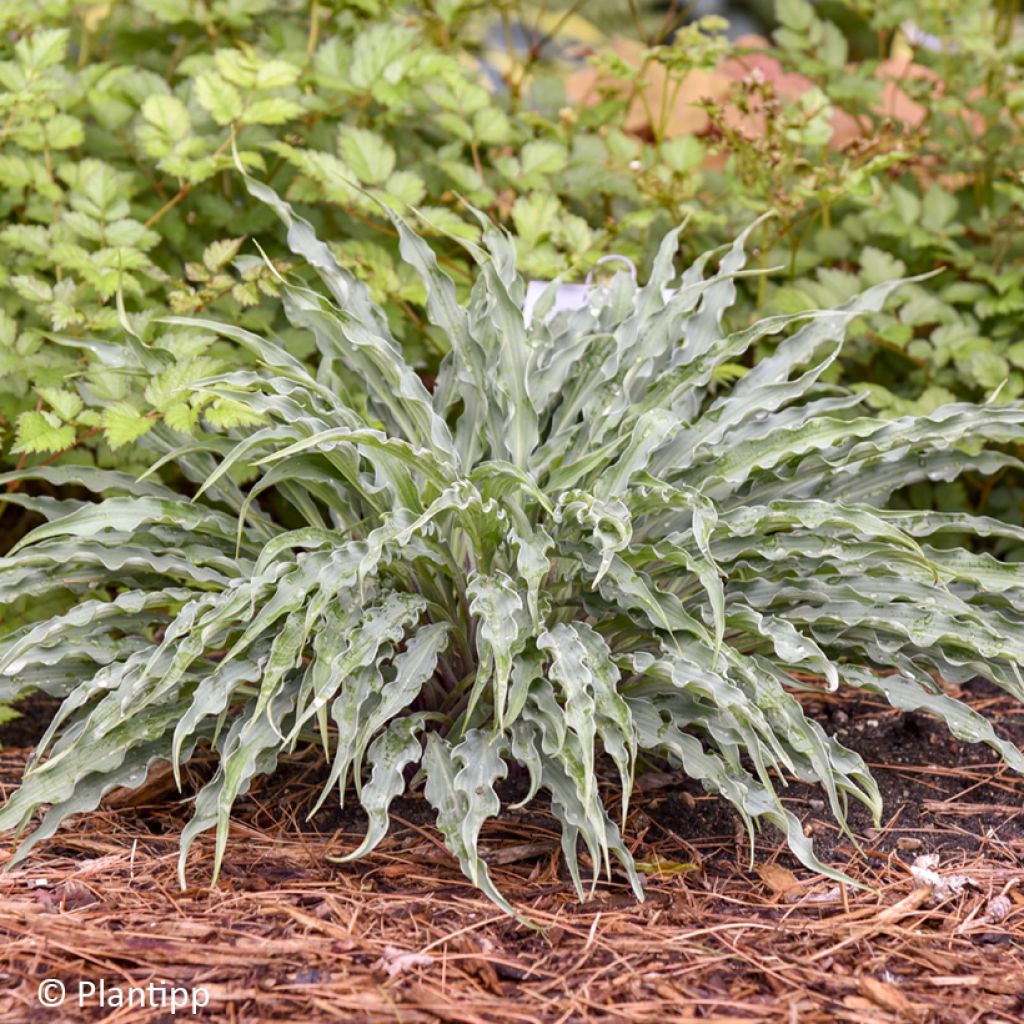

Hosta Silly String
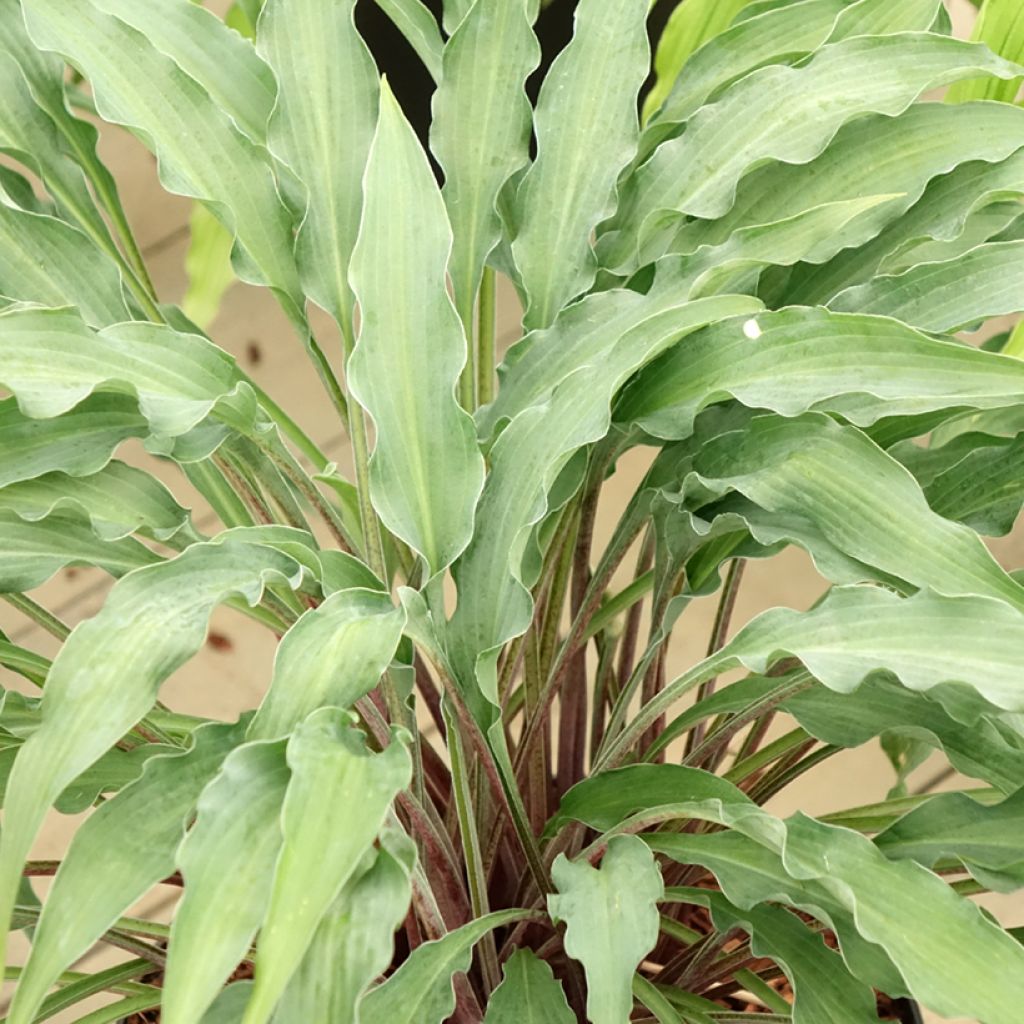

Hosta Silly String
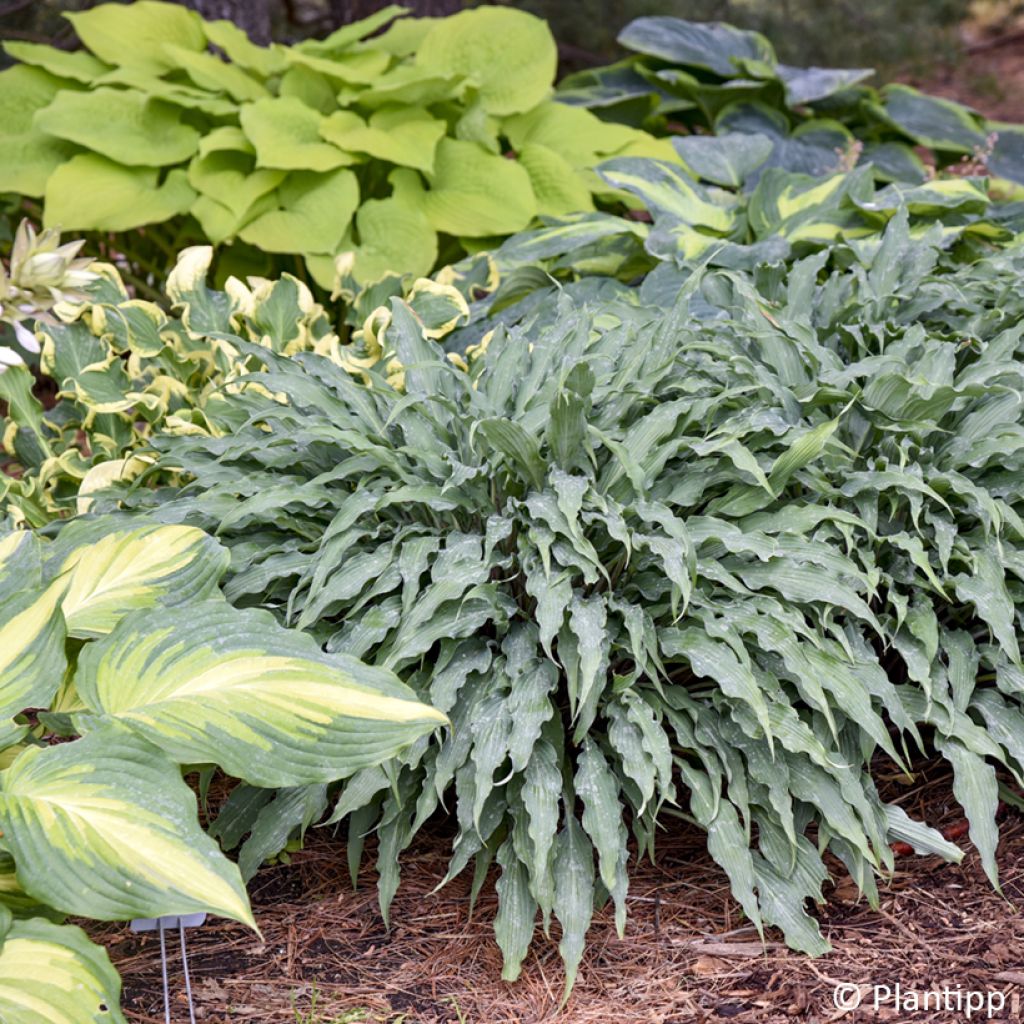

Hosta Silly String
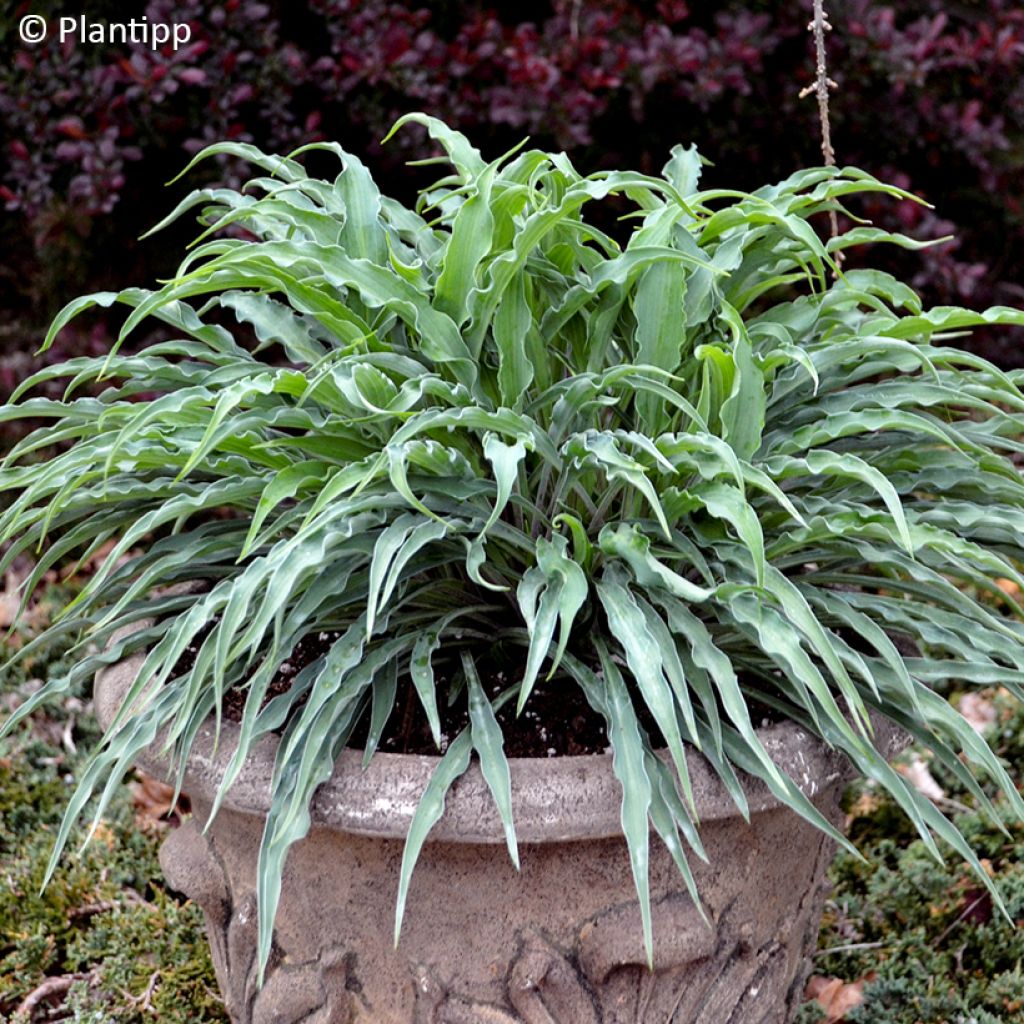

Hosta Silly String
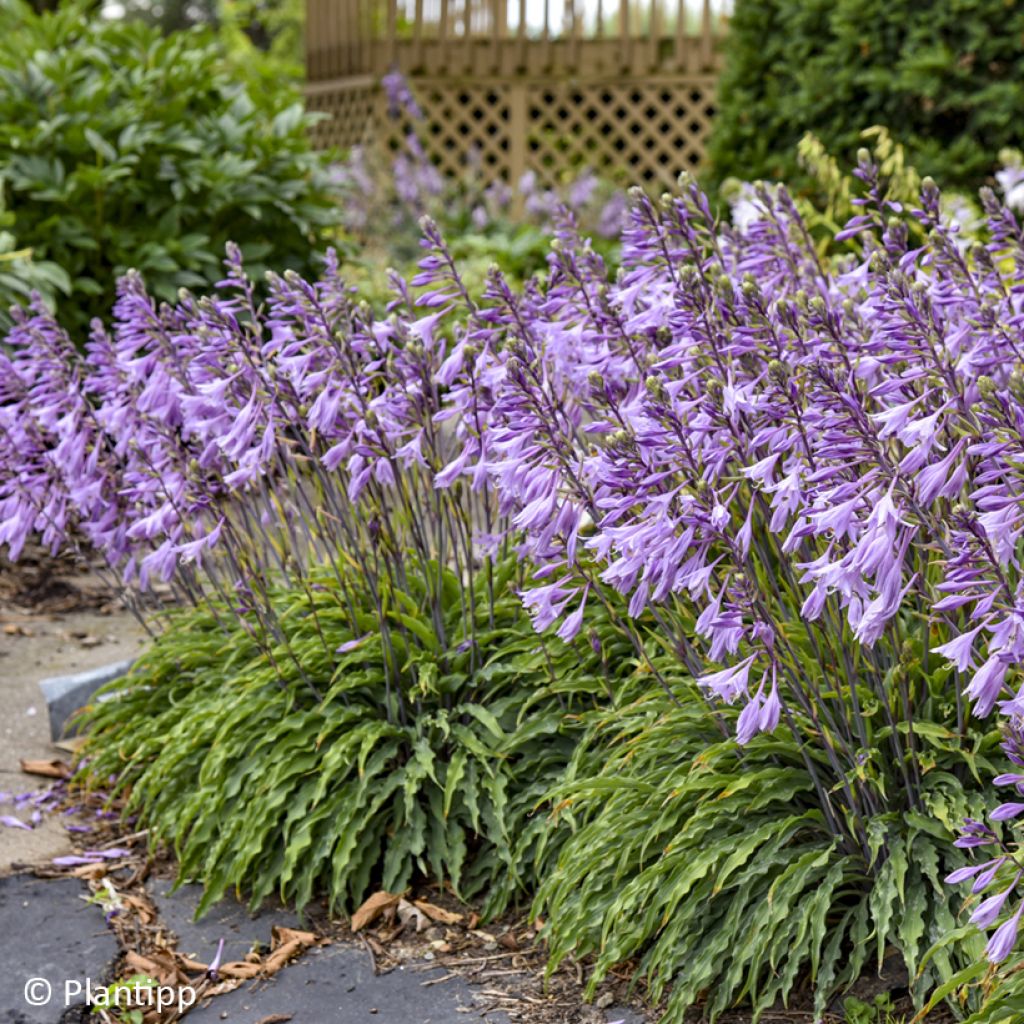

Hosta Silly String
Hosta Silly String
Hosta Silly String 'PP32127'
Plantain Lily, Funkia, White-Margined Wavy Plantain Lily
Special offer!
Receive a €20 voucher for any order over €90 (excluding delivery costs, credit notes, and plastic-free options)!
1- Add your favorite plants to your cart.
2- Once you have reached €90, confirm your order (you can even choose the delivery date!).
3- As soon as your order is shipped, you will receive an email containing your voucher code, valid for 3 months (90 days).
Your voucher is unique and can only be used once, for any order with a minimum value of €20, excluding delivery costs.
Can be combined with other current offers, non-divisible and non-refundable.
Home or relay delivery (depending on size and destination)
Schedule delivery date,
and select date in basket
This plant carries a 12 months recovery warranty
More information
We guarantee the quality of our plants for a full growing cycle, and will replace at our expense any plant that fails to recover under normal climatic and planting conditions.

Would this plant suit my garden?
Set up your Plantfit profile →
Description
Hosta 'Silly String' is a mutation of the popular Hosta 'Curly Fries'. It develops arched, lanceolate, crinkled, glaucous blue leaves in spring. This medium-sized cultivar produces pale violet flowers with foliage that turns blue-green in summer. It looks neat, is easy to grow and thrives in moist soil, in partial shade or shade, in borders, the front of beds, or large pots.
This Hosta, or Funkia, is a fully hardy perennial, belonging to the asparagus family. 'Silly String' reaches 40 cm in height and 60 cm when in flower, spreading to around 80 cm, with a rounded habit. It forms a dense, wider-than-tall clump. This is a long-lived plant that takes some time to establish. Its foliage is deciduous and lanceolate; each very slender leaf is very wavy along the edges. The leaf is glaucous blue in spring and blue-green in summer. Flowering occurs in August-September, with pale violet, pendulous bell-shaped flowers clustered towards the top of peduncles that can reach 60 cm in height.
Hostas are often planted beneath deciduous trees or showcased in rockeries and borders, particularly near water features. This perennial is also well-suited to container cultivation or as a standalone plant. Hosta 'Silly String' pairs harmoniously with ferns, heucheras, caladiums, and astilbes, which share similar growing conditions. To accentuate the beauty of its foliage, combine it with Carex or Hakonechloa in yellow to golden hues, which will complement its colour. Spring bulbs and creeping bugle can be planted as ground cover for beautiful compositions. Similarly, baby's tears or Claytonia sibirica can form attractive ground cover in front of hostas. All hostas grow well in pots and can remain in the same container for several years. Use a special geranium compost during the growing season. As long as the foliage is not too dense, water from the top of the pot. Then place a saucer underneath, where you can also pour water, maintaining a constant level in summer.
Most species commonly found in Western gardens were introduced from Japan. Hostas are edible; they are called urui in Japan, where they are commonly eaten.
Report an error about the product description
Hosta Silly String in pictures


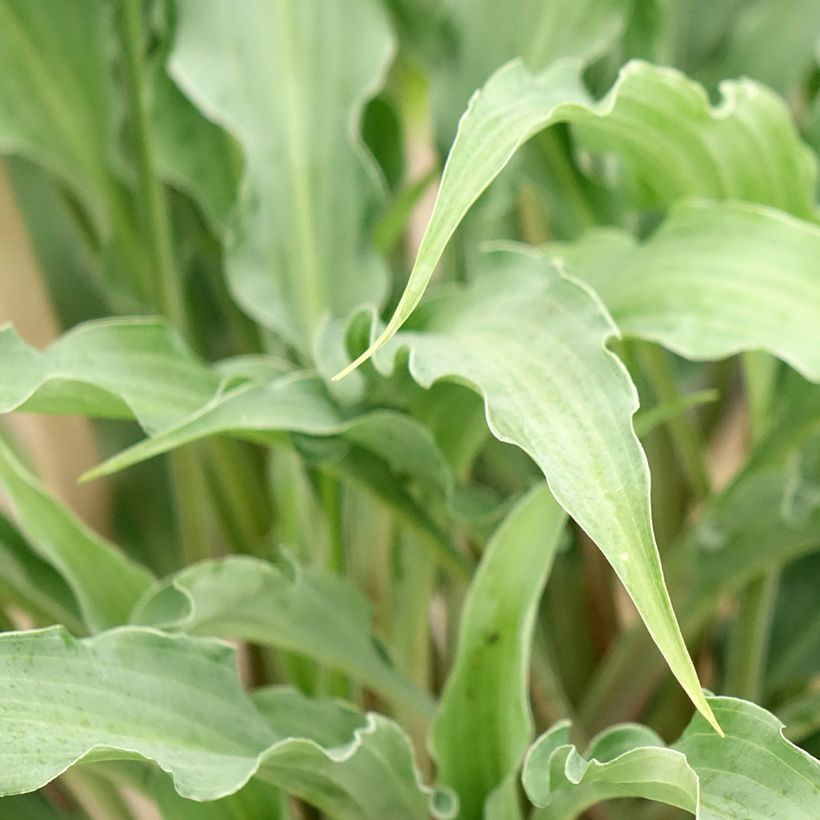

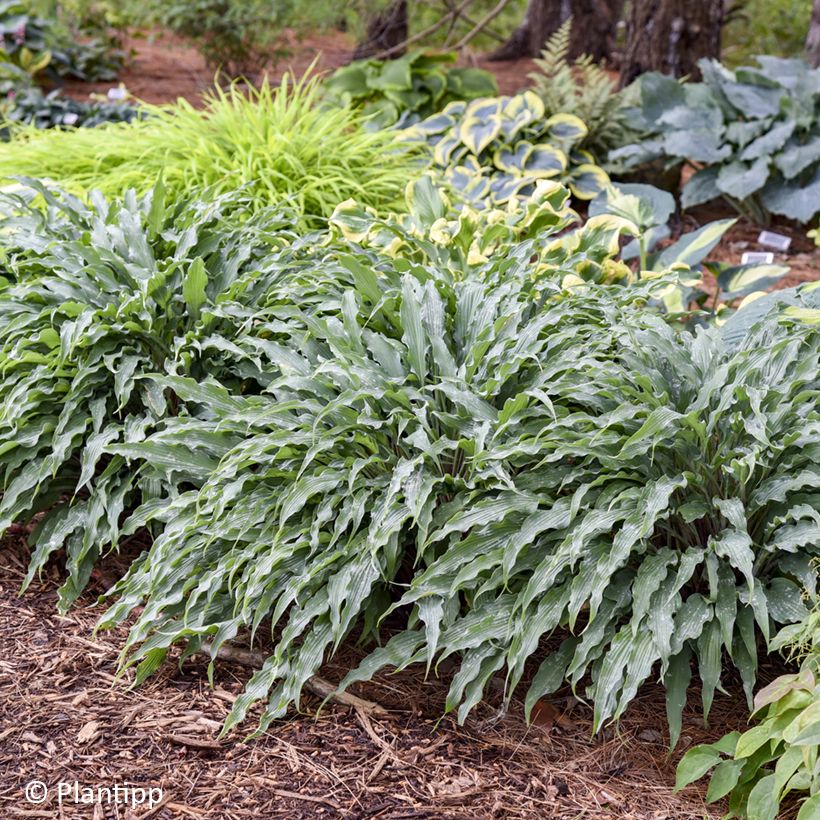

Flowering
Foliage
Plant habit
Botanical data
Hosta
Silly String 'PP32127'
Asparagaceae
Plantain Lily, Funkia, White-Margined Wavy Plantain Lily
Cultivar or hybrid
Other Hostas A to Z
View all →Planting and care
Plant Hosta 'Silly String' in spring or autumn. Hostas thrive in deep, rich, humus-bearing, loose soil, preferably neutral to acidic (and certainly low in lime), moist to wet throughout the year. Position them in partial shade or dappled shade, sheltered from strong winds.
Prepare a planting hole measuring 20 cm x 20 cm x 20 cm. If your soil is heavy, mix in equal parts compost with the crumbled soil, partially refill the hole, and place the young plant with its root ball so that the top is covered with 3 cm of soil. Adding a base fertiliser (such as dried blood or horn meal) will nourish the plant during its rooting period without risk of burning. Ensure the collar is positioned well above soil level. Firm the soil and water thoroughly to eliminate air pockets. If the weather is dry, water regularly for a few weeks to help the plant establish. Also water regularly during dry summers.
With their shared preference for damp conditions, slugs and snails are never far from hostas. Even though blue or variegated hostas often have thicker, tougher foliage—making them less appealing to slugs—these plants still need protection from gastropods. Shield your hostas by surrounding them with ferramol-based pellets (approved for organic farming), crushed eggshells, coffee grounds, mulch, or any dry, rough natural substance that deters them. Hedgehogs are the gardener's best allies against slugs and snails, as unlike chickens, they don’t disturb the soil or attack the fresh green shoots of young plants. Finally, some plants, such as wormwood and garlic, have a scent that repels slugs.
Planting period
Intended location
Care
This item has not been reviewed yet - be the first to leave a review about it.
Similar products
Haven't found what you were looking for?
Hardiness is the lowest winter temperature a plant can endure without suffering serious damage or even dying. However, hardiness is affected by location (a sheltered area, such as a patio), protection (winter cover) and soil type (hardiness is improved by well-drained soil).

Photo Sharing Terms & Conditions
In order to encourage gardeners to interact and share their experiences, Promesse de fleurs offers various media enabling content to be uploaded onto its Site - in particular via the ‘Photo sharing’ module.
The User agrees to refrain from:
- Posting any content that is illegal, prejudicial, insulting, racist, inciteful to hatred, revisionist, contrary to public decency, that infringes on privacy or on the privacy rights of third parties, in particular the publicity rights of persons and goods, intellectual property rights, or the right to privacy.
- Submitting content on behalf of a third party;
- Impersonate the identity of a third party and/or publish any personal information about a third party;
In general, the User undertakes to refrain from any unethical behaviour.
All Content (in particular text, comments, files, images, photos, videos, creative works, etc.), which may be subject to property or intellectual property rights, image or other private rights, shall remain the property of the User, subject to the limited rights granted by the terms of the licence granted by Promesse de fleurs as stated below. Users are at liberty to publish or not to publish such Content on the Site, notably via the ‘Photo Sharing’ facility, and accept that this Content shall be made public and freely accessible, notably on the Internet.
Users further acknowledge, undertake to have ,and guarantee that they hold all necessary rights and permissions to publish such material on the Site, in particular with regard to the legislation in force pertaining to any privacy, property, intellectual property, image, or contractual rights, or rights of any other nature. By publishing such Content on the Site, Users acknowledge accepting full liability as publishers of the Content within the meaning of the law, and grant Promesse de fleurs, free of charge, an inclusive, worldwide licence for the said Content for the entire duration of its publication, including all reproduction, representation, up/downloading, displaying, performing, transmission, and storage rights.
Users also grant permission for their name to be linked to the Content and accept that this link may not always be made available.
By engaging in posting material, Users consent to their Content becoming automatically accessible on the Internet, in particular on other sites and/or blogs and/or web pages of the Promesse de fleurs site, including in particular social pages and the Promesse de fleurs catalogue.
Users may secure the removal of entrusted content free of charge by issuing a simple request via our contact form.
The flowering period indicated on our website applies to countries and regions located in USDA zone 8 (France, the United Kingdom, Ireland, the Netherlands, etc.)
It will vary according to where you live:
- In zones 9 to 10 (Italy, Spain, Greece, etc.), flowering will occur about 2 to 4 weeks earlier.
- In zones 6 to 7 (Germany, Poland, Slovenia, and lower mountainous regions), flowering will be delayed by 2 to 3 weeks.
- In zone 5 (Central Europe, Scandinavia), blooming will be delayed by 3 to 5 weeks.
In temperate climates, pruning of spring-flowering shrubs (forsythia, spireas, etc.) should be done just after flowering.
Pruning of summer-flowering shrubs (Indian Lilac, Perovskia, etc.) can be done in winter or spring.
In cold regions as well as with frost-sensitive plants, avoid pruning too early when severe frosts may still occur.
The planting period indicated on our website applies to countries and regions located in USDA zone 8 (France, United Kingdom, Ireland, Netherlands).
It will vary according to where you live:
- In Mediterranean zones (Marseille, Madrid, Milan, etc.), autumn and winter are the best planting periods.
- In continental zones (Strasbourg, Munich, Vienna, etc.), delay planting by 2 to 3 weeks in spring and bring it forward by 2 to 4 weeks in autumn.
- In mountainous regions (the Alps, Pyrenees, Carpathians, etc.), it is best to plant in late spring (May-June) or late summer (August-September).
The harvesting period indicated on our website applies to countries and regions in USDA zone 8 (France, England, Ireland, the Netherlands).
In colder areas (Scandinavia, Poland, Austria...) fruit and vegetable harvests are likely to be delayed by 3-4 weeks.
In warmer areas (Italy, Spain, Greece, etc.), harvesting will probably take place earlier, depending on weather conditions.
The sowing periods indicated on our website apply to countries and regions within USDA Zone 8 (France, UK, Ireland, Netherlands).
In colder areas (Scandinavia, Poland, Austria...), delay any outdoor sowing by 3-4 weeks, or sow under glass.
In warmer climes (Italy, Spain, Greece, etc.), bring outdoor sowing forward by a few weeks.






























